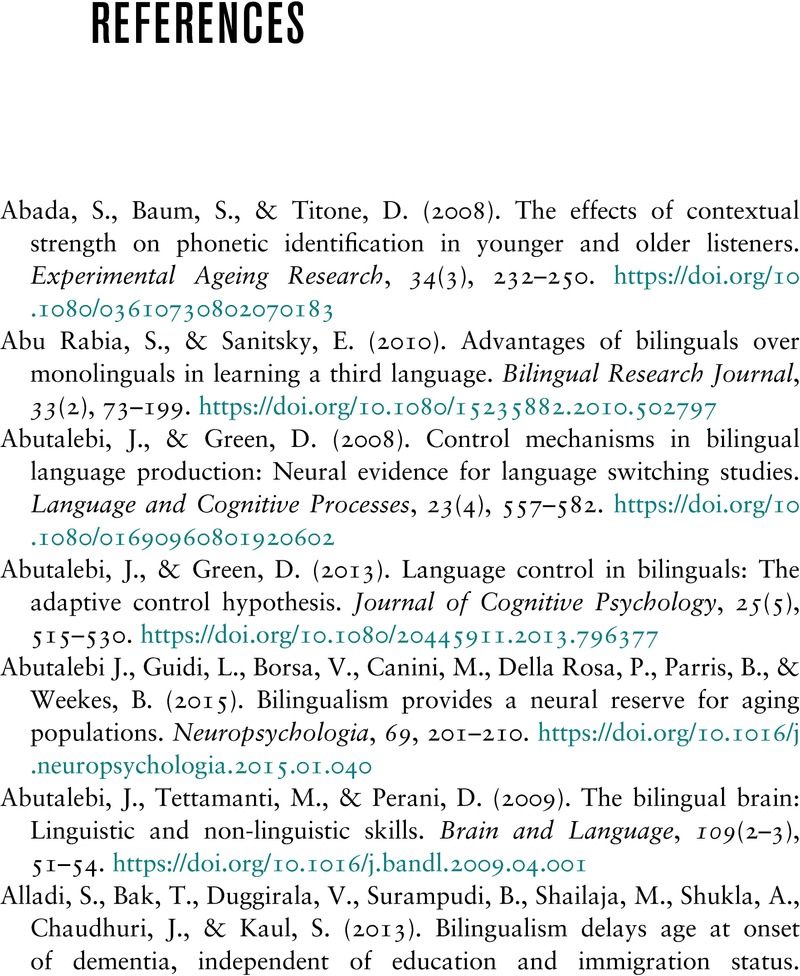Book contents
- Bilingualism Matters
- Bilingualism Matters
- Copyright page
- Contents
- Figures
- Acknowledgments
- 1 Who Is Bilingual?
- 2 The Development of Two Languages
- 3 Bilingualism Across the Life Span
- 4 Two Languages in One Brain
- 5 Bilingualism and Atypical Development
- 6 Bilingualism and Society
- Glossary
- References
- Index
- References
References
Published online by Cambridge University Press: 29 June 2023
- Bilingualism Matters
- Bilingualism Matters
- Copyright page
- Contents
- Figures
- Acknowledgments
- 1 Who Is Bilingual?
- 2 The Development of Two Languages
- 3 Bilingualism Across the Life Span
- 4 Two Languages in One Brain
- 5 Bilingualism and Atypical Development
- 6 Bilingualism and Society
- Glossary
- References
- Index
- References
Summary

- Type
- Chapter
- Information
- Bilingualism MattersLanguage Learning Across the Lifespan, pp. 127 - 148Publisher: Cambridge University PressPrint publication year: 2023



